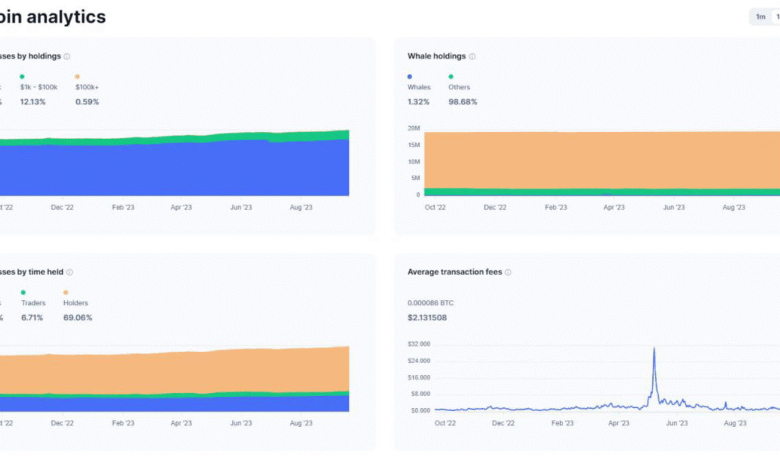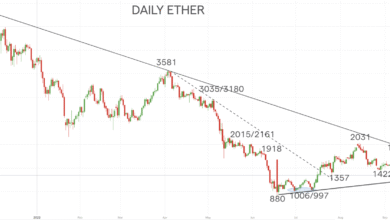Inactive Crypto Exchanges: AUSTRAC’s Urgent Warning

Inactive crypto exchanges are becoming increasingly precarious in today’s stringent regulatory landscape. With AUSTRAC regulations tightening, these digital asset exchanges must heed the warning to either remain active or face forced cancellation. An alarming number of the 427 registered exchanges in Australia have been identified as inactive, raising substantial concerns about their potential for misuse in criminal activities. The agency’s focus on cryptocurrency compliance signifies a broader commitment to safeguarding the integrity of the financial ecosystem, especially as it relates to DCE registration. As the landscape shifts, it’s crucial for exchange operators to remain vigilant and responsive to their obligations to mitigate risks associated with inactive platforms.
The landscape of dormant cryptocurrency platforms is under scrutiny as regulatory bodies intensify their oversight. Known as digital currency exchanges (DCEs), these platforms must maintain activity to avoid cancellation of their registrations. With AUSTRAC at the forefront of enforcing compliance, inactive exchanges are urged to either update their status or voluntarily withdraw. This is particularly significant since many exchanges may not be aware of the risks they pose when remaining dormant. The pivotal aim of these regulations is to protect consumers and prevent illicit use of these platforms.
Understanding AUSTRAC Regulations for Digital Asset Exchanges
AUSTRAC regulations play a crucial role in governing the operations of digital asset exchanges in Australia. These regulations are designed to combat money laundering and terrorist financing, thereby ensuring the integrity of the financial system. All exchanges that wish to operate legally must register with AUSTRAC and adhere to strict compliance guidelines. These guidelines dictate that exchanges must maintain accurate records, report suspicious transactions, and ensure that their services are up to date to avoid penalties or forced cancellation of their registration.
Furthermore, these AUSTRAC regulations impose a framework for monitoring and evaluating the activities of the exchanges. By maintaining a robust compliance regime, AUSTRAC aims to develop a safer cryptocurrency ecosystem. This framework not only protects consumers but also enhances the credibility of digital asset exchanges within the broader financial infrastructure. Understanding these regulations is vital for both existing and prospective digital currency exchanges to ensure they remain compliant and avoid sanctions.
The Risks of Inactive Crypto Exchanges
Inactive crypto exchanges represent a significant risk within the digital asset ecosystem. When exchanges are registered but not actively operational, they become susceptible to exploitation by criminals who may use them to facilitate illicit activities, such as money laundering or fraud. AUSTRAC has identified that many of the 427 registered digital asset exchanges in Australia are inactive, prompting urgent calls for these entities to either withdraw or update their operational status to maintain a secure financial environment.
Inactivity poses not only a compliance risk but also undermines consumer trust in the cryptocurrency market. As AUSTRAC’s CEO Brendan Thomas pointed out, the integrity of the registration database is paramount. By encouraging exchanges to either remain active or relinquish their registration, AUSTRAC aims to bolster confidence in the sector. An active cryptocurrency environment, with engaged exchanges adhering to regulatory standards, is essential for preventing the misuse of platforms and promoting legitimate digital asset trading.
The Importance of DCE Registration for Cryptocurrency Compliance
DCE (Digital Currency Exchange) registration serves as a fundamental requirement for cryptocurrency compliance in Australia. This registration not only legitimizes an exchange’s operations but also ensures that they adhere to AUSTRAC’s regulations aimed at preventing financial crime. Compliance involves ongoing obligations, such as updating regulatory information and reporting suspicious activities, which are crucial for maintaining transparent operations within the cryptocurrency space.
Moreover, the DCE registration confirms that an exchange is committed to protecting its users by implementing adequate security measures and compliance protocols. Since the regulatory landscape can be complex, exchanges must understand and navigate these requirements diligently to avoid pitfalls. By staying compliant with DCE regulations, exchanges can reinforce consumer confidence and contribute to a safer financial ecosystem.
AUSTRAC’s Initiative for Publicly Accessible Digital Asset Register
AUSTRAC’s initiative to create a publicly accessible register of digital asset exchanges is a significant step towards enhancing transparency within the cryptocurrency sector. This register will not only list compliant exchanges but also provide the public with a means to verify whether a digital currency exchange is legally registered. Such measures are designed to mitigate misinformation and increase consumer awareness, thereby fostering a more robust and secure trading environment for users.
By making this information publicly accessible, AUSTRAC aims to build trust among consumers. Users will have the ability to check the legitimacy of exchanges before engaging in transactions, which can play a crucial role in protecting them from fraudulent schemes. This initiative reinforces the importance of compliance and registration, as it empowers users to make informed decisions based on verified information.
Protecting Consumer Confidence in Cryptocurrency
Maintaining consumer confidence is vital for the growth and sustainability of the cryptocurrency market. With increasing regulatory scrutiny, particularly by bodies like AUSTRAC, exchanges that adhere to compliance measures and actively communicate their operational status can build trust with their users. Consumers are more likely to engage in trading activities when they feel assured that the exchanges they are using are secure and comply with relevant regulations.
Furthermore, proactive measures from exchanges, such as informing AUSTRAC about changes in services and remaining active, are essential for establishing a reliable trading environment. When exchanges prioritize compliance and transparency, it not only protects their users but also contributes positively to the overall reputation of the cryptocurrency industry. Thus, enhancing consumer confidence ultimately leads to increased adoption and engagement within the digital asset market.
The Future of Digital Asset Exchanges under AUSTRAC
The future of digital asset exchanges under the guidance of AUSTRAC will likely see a more regulated and secure operational framework. As AUSTRAC continues to enforce compliance and monitor the activities of exchanges, it is anticipated that this will lead to a healthier ecosystem that prioritizes consumer safety. With the potential cancellation of registrations for inactive exchanges, the market could become more streamlined, allowing only active and compliant players to thrive.
Moreover, with regulatory bodies taking a firmer stance, exchanges will need to adapt to maintain their licenses. This evolution in the cryptocurrency landscape could result in increased accountability among exchanges, ultimately fostering a climate where illicit activities are deterred. The push for compliance and registration reinforces the need for robust operational practices, setting the stage for greater investor confidence and participation in the market.
Addressing the Challenges of Cryptocurrency Compliance
Cryptocurrency compliance presents numerous challenges for digital asset exchanges, especially with evolving regulations and the necessity for constant vigilance against financial crimes. AUSTRAC’s strict guidelines require exchanges to implement robust compliance measures and remain aware of changes in legislation. Adapting to these regulations can be daunting for exchanges, particularly new entrants who may lack the resources or knowledge to navigate the compliance landscape effectively.
However, the focus on compliance ultimately serves to benefit both exchanges and their users. By cultivating a culture of compliance, exchanges can protect themselves from potential penalties and enhance their operational integrity. Continuous education and training for staff on regulatory frameworks are essential strategies that can empower exchanges to meet compliance requirements and reduce the risks associated with operating in a high-stakes environment.
Engagement Strategies for Digital Asset Exchanges
For digital asset exchanges, implementing effective engagement strategies is critical to navigating regulatory pressures and maintaining a good relationship with users. This includes providing transparent communication about compliance efforts and updates regarding their operational status. By actively engaging with their user base and addressing concerns promptly, exchanges can instill confidence and loyalty among their customers.
Furthermore, educational initiatives that inform users about the importance of compliance and how it protects their investments can also enhance user engagement. By fostering a community that values transparency and compliance, exchanges are likely to see increased participation and trust, contributing to a more vibrant digital asset ecosystem.
The Role of Technology in Enhancing Compliance
Technology plays a pivotal role in enhancing compliance within the cryptocurrency space. As regulatory requirements grow more complex, digital asset exchanges are increasingly turning to technology solutions that streamline compliance processes. These tools can automate reporting, monitor transactions for suspicious activity, and ensure that regulatory updates are seamlessly integrated into operational procedures.
Investing in technology not only helps exchanges comply with AUSTRAC regulations but also improves overall operational efficiency. Enhanced compliance capabilities ultimately reduce the risk of fines and operational disruptions, creating a safer trading environment for users. As technology continues to evolve, exchanges are likely to adopt more innovative solutions, further solidifying their commitments to security and compliance.
Frequently Asked Questions
What are inactive crypto exchanges and how does AUSTRAC regulate them?
Inactive crypto exchanges are digital asset exchanges that are registered but do not actively provide services. AUSTRAC regulates these exchanges by urging them to withdraw their registrations voluntarily to prevent potential exploitation by criminals. If exchanges fail to comply, AUSTRAC can forcibly cancel their registrations.
How does AUSTRAC determine if a digital currency exchange is inactive?
AUSTRAC assesses digital currency exchanges for inactivity based on their compliance with reporting and service updates. The agency expects registered exchanges to keep their operational details current and notify AUSTRAC about any services no longer offered. If an exchange is deemed inactive, AUSTRAC can take action to cancel its registration.
What risks do inactive digital asset exchanges pose under AUSTRAC regulations?
Inactive digital asset exchanges pose significant risks under AUSTRAC regulations as they can be exploited by criminals for illegal activities such as money laundering. AUSTRAC’s crackdown on these exchanges aims to mitigate these risks by ensuring that only active and compliant DCEs operate within the legal framework.
What should inactive cryptocurrency exchanges do to comply with AUSTRAC regulations?
Inactive cryptocurrency exchanges should voluntarily withdraw their registrations from AUSTRAC to comply with regulations. They need to inform AUSTRAC if they are no longer providing services to ensure the integrity of the digital asset exchange register and prevent misuse by criminals.
Can inactive digital asset exchanges reapply for registration with AUSTRAC?
Yes, inactive digital asset exchanges can reapply for registration with AUSTRAC if their circumstances change and they resume operations. However, they must ensure compliance with all applicable regulations and fulfill their obligations to maintain their registration in the future.
What is the significance of AUSTRAC’s publicly accessible register of digital asset exchanges?
The publicly accessible register of digital asset exchanges created by AUSTRAC serves to enhance consumer confidence by providing transparency regarding the registration status of digital asset exchanges. It allows the public to verify which exchanges are authorized, reducing the chance of misleading information about permitted services.
| Aspect | Description |
|---|---|
| Regulation Authority | AUSTRAC (Australian Transaction Reports and Analysis Centre) is responsible for regulating digital asset exchanges in Australia. |
| Active Exchanges | Out of 427 registered exchanges, a significant number are inactive. |
| Government Initiative | AUSTRAC urges inactive exchanges to withdraw voluntarily or face forced registration cancellation. |
| Criminal Exploitation Risks | Inactive exchanges present risks of being exploited for illicit activities. |
| CEO Statement | AUSTRAC CEO Brendan Thomas emphasizes the need for accurate details of services offered by exchanges. |
| Public Register | AUSTRAC plans to create a public register of registered exchanges to enhance consumer confidence. |
Summary
Inactive Crypto Exchanges are under scrutiny from AUSTRAC, the regulatory body overseeing digital asset exchanges in Australia. The agency’s recent initiative highlights the risks these inactive exchanges pose, particularly their potential for criminal exploitation. By urging such exchanges to either remain active or risk their registrations being cancelled, AUSTRAC aims to protect consumers and enhance the overall integrity of the digital asset marketplace. This proactive approach not only signals a commitment to regulation but also seeks to foster trust among users by ensuring that only compliant exchanges remain operational.




